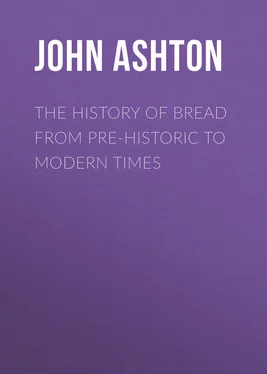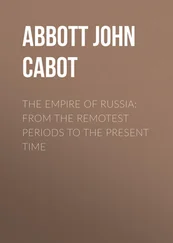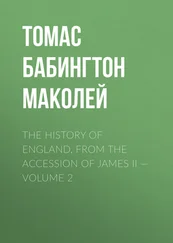John Ashton - The History of Bread From Pre-historic to Modern Times
Здесь есть возможность читать онлайн «John Ashton - The History of Bread From Pre-historic to Modern Times» — ознакомительный отрывок электронной книги совершенно бесплатно, а после прочтения отрывка купить полную версию. В некоторых случаях можно слушать аудио, скачать через торрент в формате fb2 и присутствует краткое содержание. Жанр: foreign_antique, foreign_prose, на английском языке. Описание произведения, (предисловие) а так же отзывы посетителей доступны на портале библиотеки ЛибКат.
- Название:The History of Bread From Pre-historic to Modern Times
- Автор:
- Жанр:
- Год:неизвестен
- ISBN:нет данных
- Рейтинг книги:3 / 5. Голосов: 1
-
Избранное:Добавить в избранное
- Отзывы:
-
Ваша оценка:
- 60
- 1
- 2
- 3
- 4
- 5
The History of Bread From Pre-historic to Modern Times: краткое содержание, описание и аннотация
Предлагаем к чтению аннотацию, описание, краткое содержание или предисловие (зависит от того, что написал сам автор книги «The History of Bread From Pre-historic to Modern Times»). Если вы не нашли необходимую информацию о книге — напишите в комментариях, мы постараемся отыскать её.
The History of Bread From Pre-historic to Modern Times — читать онлайн ознакомительный отрывок
Ниже представлен текст книги, разбитый по страницам. Система сохранения места последней прочитанной страницы, позволяет с удобством читать онлайн бесплатно книгу «The History of Bread From Pre-historic to Modern Times», без необходимости каждый раз заново искать на чём Вы остановились. Поставьте закладку, и сможете в любой момент перейти на страницу, на которой закончили чтение.
Интервал:
Закладка:
Harvest-time was appointed by Moses as one of the great festivals – Exodus xxiii. 14, etc.: ‘Three times thou shalt keep a feast unto me in the year. Thou shalt keep the feast of unleavened bread: (thou shalt eat unleavened bread seven days, as I commanded thee, in the time appointed of the month Abib; for in it thou camest out from Egypt: and none shall appear before me empty). And the feast of harvest, the first-fruits of thy labours, which thou hast sown in the field: and the feast of ingathering, which is in the end of the year, when thou hast gathered in thy labours out of the field.’ And again, in Exodus xxxiv., this is repeated, with the addition (v. 21): ‘Six days thou shalt work, but on the seventh day thou shalt rest: in earing time and in harvest thou shalt rest.’ This holiday was, and is, called the feast of tabernacles, and we read in Deut. xvi. 13, etc.: ‘Thou shalt observe the feast of tabernacles seven days, after that thou hast gathered in thy corn and thy wine: and thou shalt rejoice in thy feast, thou, and thy son, and thy daughter, and thy man-servant, and thy maid-servant, and the Levite, the stranger, and the fatherless, and the widow, that are within thy gates. Seven days shalt thou keep a solemn feast unto the Lord thy God in the place which the Lord shall choose: because the Lord thy God shall bless thee in all thine increase, and in all the works of thine hands, therefore thou shalt surely rejoice.’
In the story of Ruth we get an idyllic picture of a Hebrew harvest field, with its kindly greetings between master and man, and its gleaners. Naomi, a native of Bethlehem, returned thither from Moab, after the death of her husband, Elimelech, accompanied by her daughter-in-law Ruth, who was also a widow, ‘and they came to Bethlehem in the beginning of barley harvest.’
Special favour was accorded to Ruth. She might glean ‘among the sheaves’ — i. e. , following the reapers, instead of waiting until the corn had been carried; but the Jews were enjoined to be liberal in the matter of gleaning, as we see by Lev. xix. 9: ‘And when ye reap the harvest of your land, thou shalt not wholly reap the corners of thy field, neither shalt thou gather the gleanings of thy harvest’; and in Deut. xxiv. 19, ‘When thou cuttest down thine harvest in thy field, and hast forgot a sheaf in the field, thou shalt not go again to fetch it; it shall be for the stranger, for the fatherless, and for the widow: that the Lord thy God may bless thee in all the work of thine hands.’
There were no public mills at which flour could be ground, but, as now, in the unchangeable East, every family ground their own corn, and this task, as well as the making and baking of bread, was left to the women. See Matt. xxiv. 41: ‘Two women shall be grinding at the mill; the one shall be taken, and the other left.’ Again we find that it was a woman who was grinding corn on a housetop in Thebez who (Judges ix. 53) ‘cast a piece of a millstone upon Abimelech’s head, and all to brake his skull.’ An Eastern flour mill consists of two stones, the upper one rotating on the lower. In Shaw’s Travels , p. 297, he says: ‘Most families grind their wheat and barley at home, having two portable millstones for that purpose. The uppermost is turned round by a small handle of wood or iron placed in the edge of it. When this stone is large, or expedition is required, then a second person is called in to assist. It is usual for the women alone to be concerned in this employ, setting themselves down over against each other, with the millstones between them.’
And Dr. Clarke, in his Travels , 6 6 Vol. IV., 167, 168.
says, that at Nazareth: ‘Scarcely had we reached the apartment prepared for our reception, when, looking into the courtyard belonging to the house, we beheld two women grinding at the mill in a manner most forcibly illustrating the saying of our Saviour. They were preparing flour to make our bread, as it is always customary in the country when strangers arrive. The two women, seated upon the ground opposite to each other, held between them two round, flat stones, such as are seen in Lapland, and such as in Scotland are called querns. In the centre of the upper stone was a cavity for pouring in the corn, and by the side of this an upright wooden handle for moving the stone. As the operation began, one of the women with her right hand pushed this handle to the woman opposite, who again sent it to her companion, thus communicating a rotary and very rapid motion to the upper stone, their left hands being all the while employed in supplying fresh corn as fast as the bran and flour escaped from the sides of the machine.’
Of such importance among the household treasures of the Hebrews was the flour mill esteemed that Moses laid it down (Deut. xxiv. 6): ‘No man shall take the nether or the upper millstone to pledge: for he taketh a man’s life to pledge.’
The first mention of bread in the Bible, with the exception of Adam’s curse, is in Gen. xiv. 18: ‘And Melchizedek, King of Salem, brought forth bread and wine’; but it is pre-supposed, in Chap. xii. 10: ‘And there was a famine in the land: and Abram went down into Egypt to sojourn there; for the famine was grievous in the land.’ When the three angels visited him on the plains of Mamre, he offered them hospitality (Gen. xviii. 5, 6): ‘I will fetch a morsel of bread, and comfort ye your hearts; after that ye shall pass on: for therefore are ye come to your servant. And they said, So do, as thou hast said. And Abraham hastened into the tent unto Sarah, and said, Make ready quickly three measures of fine meal, knead it, and make cakes upon the hearth.’ And to this day in Syria cakes are made upon the hearth, and the breaking of bread together is a token of amity and protection extended by the stronger to the weaker.
Of what shape the Hebrew bread was we do not know, for no representation of it has come down to us. As a rule it was possibly in the form of thin flat round cakes – similar to those unleavened biscuits now used by the Jews during their Passover, and the form and dimensions of which are probably traditional – but they also had loaves of bread, as we read in many places. The Shew, or Presence bread, must have been loaves, because of the quantity of flour in each – between five and six pints. The directions for making it, etc., are plain enough (Lev. xxiv. 5-9): ‘And thou shalt take fine flour, and bake twelve cakes thereof: two tenth deals shall be in one cake. And thou shalt set them in two rows, six on a row, upon the pure table before the Lord. And thou shalt put pure frankincense upon each row, that it may be on the bread for a memorial, even an offering made by fire unto the Lord. Every Sabbath he shall set it in order before the Lord continually, being taken from the children of Israel by an everlasting covenant. And it shall be Aaron’s and his sons’; and they shall eat it in the holy place: for it is most holy unto him of the offerings of the Lord made by fire by a perpetual statute.’
This shew bread must have been leavened, for a cake containing nearly three quarts of flour, and unleavened, could hardly be. We have no certainty as to the shape of these twelve loaves, typical of the tribes of Israel; for, although the gold table on which it was placed figures in a bas relief on the Arch of Titus at Rome, there is no bread upon it. The Rabbis say that the loaves were square, and covered with leaves of gold; and that they were placed in two piles of six each, one upon another, on the opposite ends of the table; and that between every two loaves were laid three semi-tubes, like slit canes, of gold, for the purpose of keeping the cakes the better from mouldiness and corruption by admitting the air between them; and it is also said, but upon what authority I know not, that each end of the table was furnished with a tall, three-pronged fork of gold, one at each corner, standing perpendicularly, for the purpose of keeping the loaves in their proper places.
Читать дальшеИнтервал:
Закладка:
Похожие книги на «The History of Bread From Pre-historic to Modern Times»
Представляем Вашему вниманию похожие книги на «The History of Bread From Pre-historic to Modern Times» списком для выбора. Мы отобрали схожую по названию и смыслу литературу в надежде предоставить читателям больше вариантов отыскать новые, интересные, ещё непрочитанные произведения.
Обсуждение, отзывы о книге «The History of Bread From Pre-historic to Modern Times» и просто собственные мнения читателей. Оставьте ваши комментарии, напишите, что Вы думаете о произведении, его смысле или главных героях. Укажите что конкретно понравилось, а что нет, и почему Вы так считаете.












